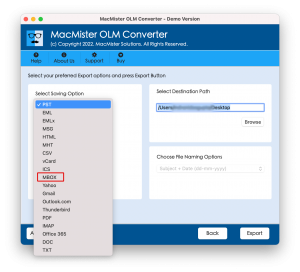A warehouse may appear to run smoothly, but a single malfunction in dock equipment can disrupt the entire system. The loading dock is one of the most critical yet often overlooked areas in any facility. When equipment at the dock stops working as intended, not only does it slow down schedules, but it also introduces risks to worker safety and regulatory compliance. This is where Loading Dock Repair Service in Medley becomes an important part of operations. By addressing issues before they escalate, businesses can maintain compliance and protect their teams from preventable hazards.
Safety as the Foundation of Compliance
Every aspect of compliance begins with safety. Docks that are equipped with faulty levelers, damaged plates, or weakened bumpers create unsafe conditions. Even small defects can lead to injuries or accidents, which directly conflict with workplace regulations. Employees depend on stable and functional dock systems to perform their duties without unnecessary risks. By ensuring that every component is operating as designed, safety standards remain intact, and compliance becomes much easier to uphold. For this reason, reliable Loading Dock equipment repair service plays a key role in keeping both people and operations protected.
The Importance of Equipment Standards
Compliance is not limited to protecting workers; it also involves meeting specific standards for machinery and equipment. Regulatory bodies outline requirements for hydraulic systems, electrical wiring, and operational controls. If these components are neglected, they can quickly fall below acceptable standards, creating compliance violations. Regular maintenance and repair are necessary to ensure that dock machinery continues to meet these expectations. Without this consistent attention, businesses risk facing penalties, downtime, and possible legal complications. Proper upkeep becomes the bridge between safe operations and fully compliant facilities.
Identifying Hidden Issues Through Inspections
Many compliance-related problems remain unseen until they develop into larger failures. Corroded materials, leaking fluids, or weakened welds often remain unnoticed during daily routines. However, inspections conducted by professionals are designed to uncover these risks before they escalate. Addressing them early not only helps maintain operational efficiency but also demonstrates an active commitment to compliance requirements. These inspections create a clear record of proactive care, showing that the facility takes regulatory expectations seriously. Preventive attention keeps operations steady while reducing the likelihood of sudden breakdowns.
The Impact of Downtime on Compliance
Delays caused by malfunctioning dock systems affect more than just productivity. When equipment fails, employees may attempt shortcuts or unsafe methods to keep goods moving. These improvisations can quickly breach compliance standards. For example, a stuck dock door might tempt workers to operate machinery in ways not intended, raising both safety and compliance risks. Reducing downtime through proper repairs is not just about staying on schedule; it is also about avoiding scenarios that compromise adherence to workplace rules. Keeping dock equipment functional ensures that compliance remains intact even during the busiest shifts.
Extending the Lifespan of Dock Systems
Another important link between repair services and compliance lies in equipment longevity. Dock systems that are regularly repaired and maintained continue to function at the level required by regulatory bodies. Worn-out or neglected machinery, on the other hand, can fail inspections even if it is technically still running. Extending lifespan through proper care prevents this situation. Facilities that focus on timely maintenance not only reduce replacement costs but also ensure their equipment continues to meet compliance requirements year after year. Consistent attention keeps older systems aligned with modern standards.
Compliance and Professional Reputation
Compliance does not exist in isolation; it shapes the way a facility is perceived by carriers, vendors, and clients. A loading dock that consistently meets regulatory expectations sends a clear message about professionalism and responsibility. Broken or unsafe equipment creates the opposite impression, suggesting a lack of control and care. Repair services help ensure that equipment remains compliant, which in turn supports a reputation for reliability. Vendors and partners value working with facilities that show consistency in both safety and efficiency. A strong reputation often grows from steady compliance practices.
Documentation as Proof of Compliance
Inspections and repairs also serve another important function: documentation. Regulatory bodies often require evidence that facilities are maintaining safe and functional work environments. Service records, inspection reports, and repair histories provide this proof. Having a documented history of consistent attention to dock systems supports compliance audits and demonstrates accountability. Without this documentation, even a facility with safe practices may face unnecessary challenges during regulatory reviews. Repair services contribute to a paper trail that reinforces operational transparency and compliance readiness.
Bringing Compliance Full Circle
Compliance at the loading dock is more than a matter of following rules; it is about creating a safe, efficient, and trustworthy environment. From preventing injuries to extending the lifespan of critical systems, repair services keep every part of the dock aligned with regulatory standards. Inspections reveal hidden problems, repairs reduce downtime, and maintenance supports long-term functionality. Together, these efforts ensure that facilities remain both safe and compliant.
In the end, a Loading Dock Repair Service in Medley provides the essential support that keeps businesses operating within the boundaries of compliance, while also helping maintain the balance between safety, efficiency, and accountability.






